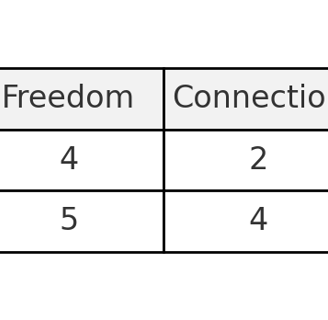The Heart Knows Best: Choosing What's Right for Your Family vs. Pleasing Others
In today’s globally connected world, parenting decisions are rarely made in a vacuum. Whether it’s choosing where to raise your kids, what language to speak at home, or how to spend the holidays, you’re likely balancing your own values and desires against a chorus of opinions from extended family, friends, and even acquaintances. At the core of it all lies a fundamental tension: how do you choose what’s best for your family without being overwhelmed by the hopes, traditions, and expectations of others? This article explores that dynamic — the emotional tug-of-war between individual autonomy and relational pressure. We’ll look at real-world examples, introduce a decision-making matrix to help you get clear, and emphasize the central role of the couple dynamic in navigating these crossroads together. Because ultimately, sustainable choices come from within the home, not from those watching it from the outside.
7/1/20254 min read


Why Family Decisions Rarely Feel Simple
Let’s say you’re considering moving abroad, switching to a new parenting philosophy, or planning a holiday that doesn’t include a visit to the grandparents. Chances are, someone’s going to feel disappointed, confused, or even offended.
Why? Because family systems are interconnected. When you break from tradition, you don’t just change logistics; you disrupt narratives:
"This is how we’ve always done it."
"What will the neighbors think?"
"Don’t you care about spending time with your roots?"
But here’s the truth: growth often requires rupture before repair. Saying yes to your family sometimes means saying no to others.
The Principle: The Heart Wants What It Wants
This isn’t just a romantic quote. It’s a guiding principle for authentic living.
When parents ignore their own longings to meet external expectations, they’re laying the groundwork for long-term resentment. No one wins a prize for martyrdom. And your kids don’t benefit from parents who are stressed, depleted, or stuck in environments that don’t suit them.
Ask yourself:
Is this decision aligned with my values, or someone else’s?
Am I trying to maintain peace at the expense of my well-being?
Would I still choose this if no one were watching?
Living with authenticity often ruffles feathers. But it also cultivates clarity, trust, and integrity.
Why the Couple Dynamic Comes First
When extended family weighs in on your parenting decisions, your strongest asset is the unity between you and your partner.
Strong couple alignment means:
You present a united front
You don’t outsource your decisions to others
You reinforce safety and predictability for your children
This doesn’t mean always agreeing on everything. It means developing a process for mutual understanding and consensus-building.
Tools for Strengthening the Couple Dynamic:
Weekly check-ins: create space to talk about emotional tensions or upcoming decisions
Shared vision statement: write out the values you both want to embody as a family
Decision journal: track past decisions, how you reached them, and their outcomes
When the parental couple functions as an intentional team, they become a buffer between the pressures of the world and the sanctuary of the home.
Real-Life Scenarios and What They Teach Us
1. Holiday Traditions: Choosing Peace Over Obligation
Emma and Marc had always celebrated Christmas at Emma’s parents’ house. But once they had their first child, the long flights and chaotic gatherings left them feeling more exhausted than festive.
They decided to spend the holiday alone in a cabin in the woods.
The response? Shock and guilt-tripping from the grandparents.
But over time, this new tradition allowed them to redefine what celebration meant. Now, extended family is invited — not expected — to join if they’d like.
Lesson: Your needs evolve. So can your traditions.
2. Language at Home: Raising Bilingual Kids Against Resistance
Luis and Alina agreed to speak only Spanish at home, even though they lived in an English-speaking country. Some extended family worried the kids would fall behind or be ‘confused.’
But research and conviction guided their decision. Their children are now bilingual and proud of their heritage.
Lesson: Resistance often comes from fear. Clarity calms fear.
3. Where to Live: Proximity vs. Authenticity
Carmen and Dana faced pressure to stay near aging parents. But staying meant sacrificing job opportunities, diversity, and the kind of lifestyle they wanted for their children.
They chose to move abroad, with a plan to host regular video calls and summer visits.
Lesson: Proximity does not equal presence. Presence is a mindset.
A Decision-Making Matrix for Family Clarity
When faced with high-stakes choices, try this framework to sort through what matters most:
Step 1: Define the Decision
What are you actually deciding? Be specific.
Step 2: Identify Stakeholders
Who is impacted? Who has a voice vs. who has a vote?
Step 3: List Core Values
What 3-5 values do you want this decision to reflect? Examples: stability, creativity, freedom, health, connection, growth
Step 4: Evaluate Scenarios
Use a 1-5 scale to rate how well each option meets each value. Total the scores.
Step 5: Gut Check
Now that the math is done, what does your heart say? If your intuitive response disagrees with the highest score, explore why.
The Cost of Pleasing Everyone
Let’s be honest. Some decisions will cause friction:
You may disappoint your in-laws.
You might clash with your cultural upbringing.
You may even lose closeness with certain friends.
But the cost of chronic self-abandonment is far higher.
When you’re constantly sacrificing your needs to accommodate others:
Resentment festers
Burnout builds
Your children internalize guilt instead of authenticity
No one benefits from a parent who is silently suffering for the sake of optics.
How to Navigate Pushback With Grace
You can honor relationships without betraying your truth. Here’s how:
Use “I” Language
“I know this might be hard to hear, but we’ve decided to do X because it works best for our family right now.”
Acknowledge Emotion
“I can tell you’re disappointed. I understand why. This isn’t easy for us either.”
Offer Alternatives
“We won’t be home this year, but we’d love to plan a Zoom dinner or visit in spring.”
Don’t Over-Explain
Justifying over and over invites debate. Clarity ends confusion.
Make It a Practice: Monthly Check-In Template
Use this self-reflection template once a month to stay aligned:
What decisions are currently causing tension?
Whose expectations are influencing my thinking?
How do I feel in my body about this choice?
What would I decide if no one else were affected?
What does my partner need to feel seen and heard?
What does our child need to feel safe and loved?
Recommended Reading
If you want to explore this topic further, these books offer valuable insights on family systems, emotional boundaries, and authentic living:
Set Boundaries, Find Peace by Nedra Glover Tawwab
The Dance of Connection by Harriet Lerner
Hold On to Your Kids by Gordon Neufeld and Gabor Maté
The Conscious Parent by Dr. Shefali Tsabary
Mating in Captivity by Esther Perel (on partnership dynamics)
Final Thoughts: Trusting the Wisdom of the Heart
Parenting is not a performance. It is a practice in presence, authenticity, and alignment.
You are allowed to:
Disappoint others
Break generational patterns
Change your mind
Prioritize joy over tradition
Protect your peace
At the end of the day, no one else lives your life but you.
So let the heart lead. Not recklessly, but resolutely. Not to escape discomfort, but to move toward truth. Not to please others, but to raise a family rooted in love, clarity, and emotional freedom.
Because no one wins a prize for pleasing everyone — but you win peace when you choose what’s true.


Inspiration for family success
Explore family living and conscious lifestyles.
© 2025. All rights reserved.
